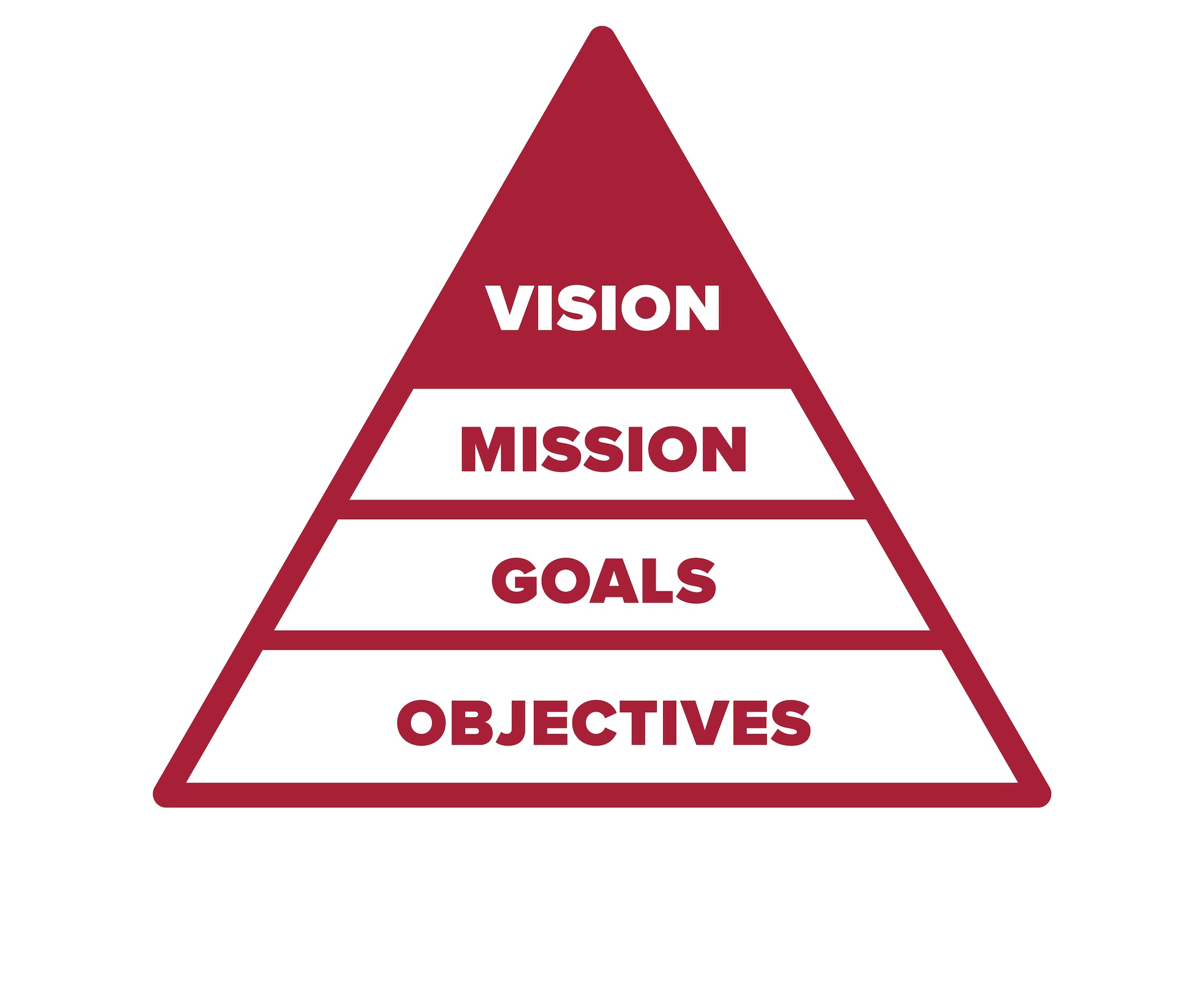Building a Cadre, Part 1: Assessment
Before you start forming a cadre, it's important to know the landscape your cadre will be working in and what you want to achieve.
Before you start forming a cadre, it's important to know the landscape your cadre will be working in and what you want to achieve. Factors such as the target audience, availability of resources (money, people, space/locations), and barriers (political, organizational, logistical, or otherwise) will all change the way you plan for and structure your cadre.
Cadres: What, Why, and How
Building a Cadre, Part 1: Assessment
Building a Cadre, Part 2: Recruitment
Building a Cadre, Part 3: Action
Building a Cadre, Part 4: Evaluation
This series is based off of a process for building a cadre developed by the CDC, which you can find here:

We'll start by identifying and refining your vision for a better world.

Establish a Vision Statement
The purpose you determined before beginning these steps is now ready to be put to its first use: forming a vision. The vision for your cadre is a single sentence that describes what success looks like. For example:
The medical cadre envisions free, accessible, high-quality protest medicine trainings throughout our city that lead to better care for those injured in protests.
The vision statement helps your cadre focus on what it wants to achieve, so it should be as simple and clear as possible. In essence, it's a description of how the world should look when you succeed.
Next up, we'll determine what the cadre's mission is, and how it will help bring about your vision.

Write a Mission Statement
Once the vision statement is complete and clear, it's time to move to the next level: the mission statement. This takes the vision and explains how the cadre will achieve it. The vision statement is your description of a better future, and the mission statement is how your cadre will help get there. For example:
The medical cadre organizes free, high-quality protest medicine trainings that are accessible to the community.
This is one approach, where the cadre hosts its own trainings, but you could also aim to enable communities to host their own:
The medical cadre identifies and trains community members and provides them with curricula, materials, and logistical support to host their own protest medicine trainings that are freely available to their community.
Both of these approaches are valid, but they're very different! Each will come with its own challenges, and the cadre will need to be structured differently depending on which you choose. There's nothing preventing the cadre starting with one approach and later changing to the other, but if half the cadre is preparing to host classes to teach medical skills directly while the other half is preparing to host classes to train instructors who will then host their own classes, the result will be confusion. There are usually many ways to achieve your vision, but a clear mission statement focuses your cadre on exactly how to contribute and what the cadre's purpose needs to be.
Assess your Infrastructure
Using your vision and mission, it's now time to determine your strengths and weaknesses. The objective of this assessment is to figure out what your cadre will be capable of so that you can match your abilities to the mission, and try to fill in any gaps that appear.
This evaluation is fundamentally meant to answer three questions:
- What are the resources we need to accomplish our mission?
- What resources do we have, and what needs to be done to utilize them?
- What resources are we missing, and how might we overcome that lack of resources?
These questions are deceptively simple on paper, but usually very difficult to answer in your concrete situation. You may have to get creative with what you define as a resource and with figuring out how you can turn what you have into what you need!
To continue our example from above, the medical cadre may be able to recruit two people with medical experience, provided cadre leadership is able to make their participation simple and facilitate the classes for them. That will require at least one organizer with enough free time to coordinate the cadre's work, as well as finding medical supplies and space to use to host classes. If the cadre has good ties to the community, it will be able to get the word out about classes, but if not it may have to rely on the spaces it is using to host classes to reach out to potential students. Funding for practice medical supplies will have to be overcome, perhaps through donations at the classes, from the cadre's members, or some other method.
The following document will help with this assessment (as well as some of the following steps we'll get to in a moment) by prompting you to answer some questions which are often ignored but very important as part of building out a cadre.
This list isn't enough on its own! As you work through the formation process, you will be faced with other challenges and questions to be answered above and beyond the ones listed.
Develop an Evaluation Strategy
The next step in planning for your cadre is determining how you will know if what you're doing is working.
- What key information can you use to determine the success of your cadre?
- When will you measure the cadre's performance? How often?
- How will you measure performance?
By answering these questions, you are creating an evaluation strategy, or a way to measure success. Without a way to measure the cadre's success, it's impossible to answer questions like:
- Are we reaching our intended audience?
- Are we using resources wisely?
- Do we need to change any part of our approach?
- Are we achieving our mission and helping move the world toward our vision?
Note that "measurement" doesn't have to be precise! For the medical cadre example, success might be measured in the following ways:
How many students do we train each month? (Measured monthly)
Do the students seem engaged and provide positive feedback at the end of the trainings we host? (Measured every time there is a training)
Has anyone put the skills they learned in our course to use? Did they feel that the training helped them in that situation? (Measured whenever someone reaches out to let us know that they used the skills we taught them)
While some of these are clear numerical measurements (number of students), others are either somewhat fuzzy (student engagement could be ranked 1-5, but is subjective) or unlikely to be measurable in numbers at all (were the skills we taught helpful when they were needed?). You may need to get creative about how you collect this information - surveys, interviews, news articles, direct counts/measurement, and more are all options.

Determine Goals
Goals, both short-term and long-term, help focus your activities and provide regular check-ins about progress and successes. When written well, a set of goals can help you determine what to focus on, what activities are within the scope of your mission, and act as a foundation for establishing objectives and strategies to achieve them.
Writing goals is a two-step process:
- Declare a desired outcome
- Identify the people who will be affected by the outcome
Goals written this way should be clear, positive, and jargon-free.
For our medical cadre, some goals might look like:
Develop a two-hour bleeding control class suitable for people who have no prior medical experience.
Regularly offer free bleeding control classes to the public.
Build and maintain working relationships with street medic groups and others doing similar work.
Regularly evaluate class times and locations to make sure they're accessible by public transit from different parts of the city for people with varying schedules.
You might notice that these are a bit vague - that's ok! In a moment, we'll set specific objectives that are designed to be specific and achievable. Goals, however, are meant to provide larger aspirations that you can use to decide how well you're achieving your mission. The same way your mission describes how the cadre will make your shared vision a reality, your goals describe how you will go about achieving your mission and what type of things you will need to do to get there.
Next, we'll identify the specific tasks which must be completed to meet the cadre's goals and ultimately succeed in its mission.

Identify Objectives
Objectives are the individual achievements that make everything happen. Whereas your vision was a grand statement of how the world should look, objectives are the opposite end of the spectrum and should be small steps that you can complete bit by bit. If looking at a goal is intimidating and you aren't sure where to start, objectives are the answer.
Objectives help you break down work, measure progress toward your goals, and set targets for accountability. It may take months or years to reach some of your goals (and some may go on forever!) but your objectives should be individual elements of work that you can point to and say "this is done."
To accomplish this, each objective needs to be SMART, an acronym which stands for:
- Specific - the objective uses one action word and describes who and what is involved
- Measurable - you can tell that the objective is complete based on some change in the world
- Achievable - the objective is possible given the resources and time you have
- Realistic - the objective directly relates to one or more goals, and proposes a reasonable solution to a problem
- Time-limited - the objective specifies a time frame within which the objective will be met
For our medical cadre example, some objectives may be:
Write a class plan for a two hour long bleeding control training by the end of this month.
Host three trainings this year.
Contact five potential locations for hosting classes by next week.
Create a map of where in the city is within a 30 minute bus ride of our next class at least a week before we host it.
Double-check that everything is still in the teaching equipment bag before the next class.
If you've made it this far: congratulations! You've planned your cadre from top to bottom and have a very well-developed sense of what needs to be done to help bring your vision of the world into reality. This is the longest step in the process, but now that you've finished, your cadre has a comprehensive plan to make change. Next, we'll talk about how to recruit people and structure your cadre for success.
